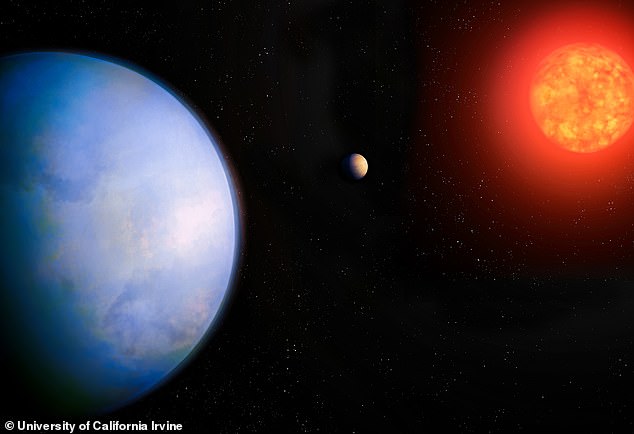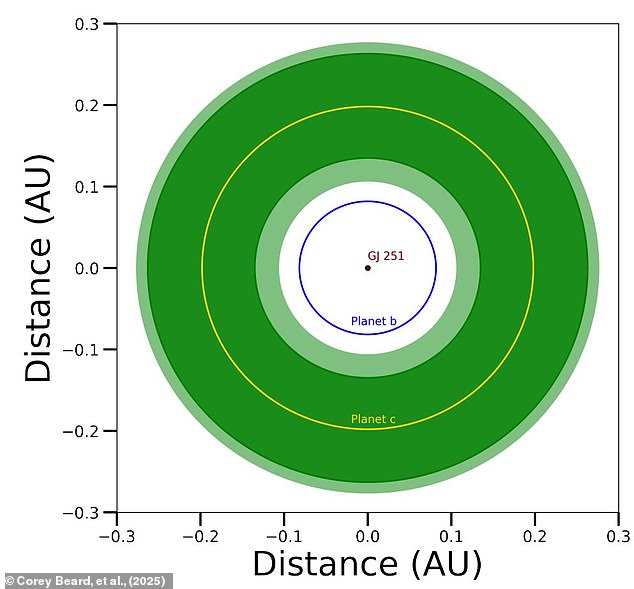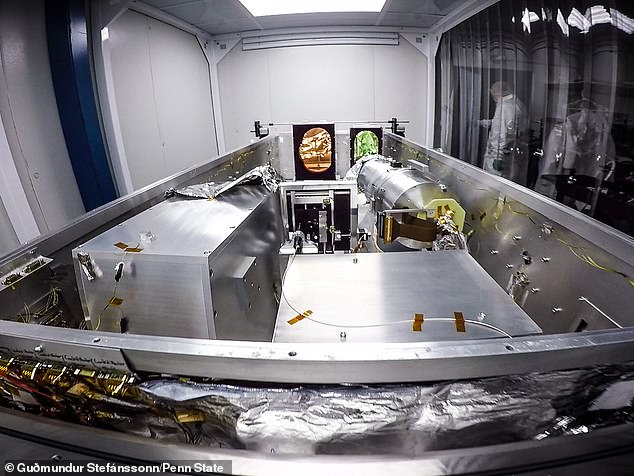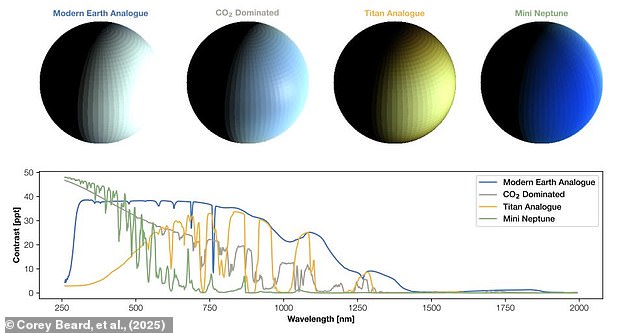Scientists have discovered a ‘super–Earth’ planet less than 20 light–years away, and it could have the right conditions for alien life.
The exoplanet, dubbed GJ 251 c, is at least four times larger than our own planet and is likely to be a rocky world.
However, what makes it truly special is that it sits within its star’s Goldilocks Zone – the region where liquid water can exist on the surface.
According to an international team of researchers, this makes the nearby planet one of the best candidates to host alien lifeforms.
To find the alien world, scientists combed through over 20 years of data to find tiny ‘wobbles’ in distant stars created by the gravity of orbiting planets.
While these wobbles don’t tell us much about conditions on the planet’s surface, they can reveal whether the planet is in the right location to support life.
Scientists don’t yet know whether GJ 251 c has an atmosphere, but new telescopes could reveal this within a decade.
Co–author Professor Suvrath Mahedevan, of Penn State University, told Daily Mail: ‘This discovery represents one of the best candidates in the search for atmospheric signature of life elsewhere in the next five to 10 years.’

Scientists have discovered a ‘super–Earth’ (artist’s impression) located less than 20 light–years from Earth, that could have the perfect conditions to support alien life
Exoplanets – planets orbiting stars other than the sun – are so small, dim, and far away that astronomers aren’t able to see them through normal means.
Instead, scientists find them by looking for the signs that something is disturbing the orbit of their host star.
Professor Mahadevan explains: ‘We are often taught in school that planets orbit their host stars, but in reality, planets and stars orbit the common centre of mass of the system.
‘So the gravitational tug of the planet is also making the star go around this centre of mass, but this wobble is tiny – only about nine centimetres over a year for the Earth around the Sun.’
Since GJ 251 c is so much bigger than Earth and its star so much smaller, this wobble is large enough for modern telescopes to detect.
To find the exoplanet, Professor Mahadevan and his co–authors used a device called the Habitable–Zone Planet Finder (HPF), which is essentially a complex prism that breaks apart the signals from starlight.
Thanks to two decades of observations, scientists already knew that there was another planet, known as GJ 251 b, orbiting this star every 14 days.
But when they looked more closely using the HPF, they found that there was a stronger signal repeating every 54 days.

Scientists say that GJ 251 c (yellow line) likely orbits within its star’s ‘Goldilocks Zone’, the region where liquid water can exist on the surface

Scientists found the planet using a device called the Habitable–Zone Planet Finder (pictured), which is essentially a complex prism that breaks apart the signals from starlight. This picked up the subtle ‘wobble’ created by the gravity of the orbiting planet
This suggested that there was a second planet in orbit – one that was significantly larger than its neighbour.
It can be extremely difficult to separate the faint signal of a distant planet from the natural activity of a star, but the researchers are confident their data proves GJ 251 c really exists.
Even more excitingly, their study, published in The Astronomical Journal, suggests that this planet is ‘one of the best candidates’ for alien life.
Professor Mahadevan says: ‘GJ 251 c is at the right distance from its host star that liquid water could exist on its surface, given the right atmospheric conditions. This makes it a really interesting world to characterise further.
‘What makes this target even more attractive is that it is less than 20 light–years away, making these characterisation efforts possible.’
Unfortunately, even though the planet is orbiting one of the 100 closest stars to the sun, Professor Mahadevan says it is too far for humans to visit with our current capabilities.
However, improved telescope technology here on Earth could allow us to answer the big questions about GJ 251 c without needing to climb into a rocket.
The researchers are already planning for when the next generation of 30–metre ground–based telescopes comes online.

Scientists are preparing for when the next generation of telescopes will be able to image the exoplanet. These simulations show what future telescopes should expect to find in different scenarios, including a ‘Modern Earth Analogue’ (far left) in which life exists
These telescopes will allow scientists to directly image rocky worlds in the habitable zones of nearby stars and to take measurements of their atmosphere.
The researchers have even created simulations of what GJ 251 c’s atmosphere might look like under various conditions.
That raises the tantalising possibility of detecting an alien ‘biosignature’ in the atmosphere of an exoplanet within the next five to 10 years.
Co–author Dr Corey Beard, an exoplanet scientist from UC Irvine, says: ‘We are at the cutting edge of technology and analysis methods with this system.
‘We need the next generation of telescopes to directly image this candidate, but what we also need is community investment.’
